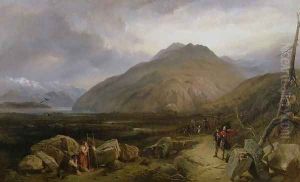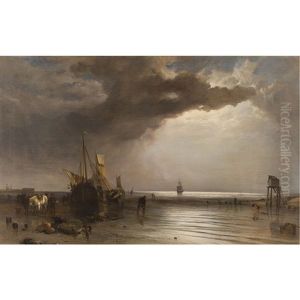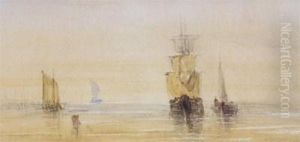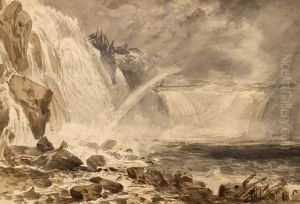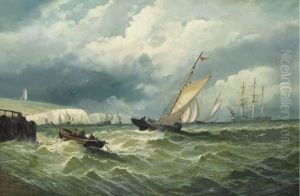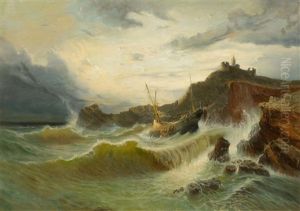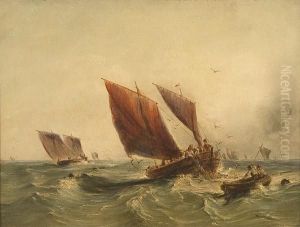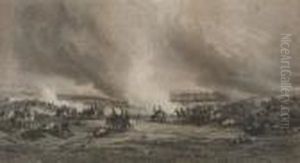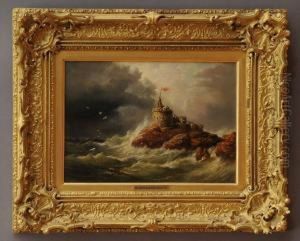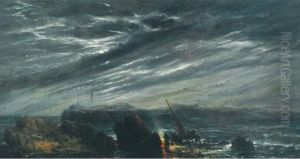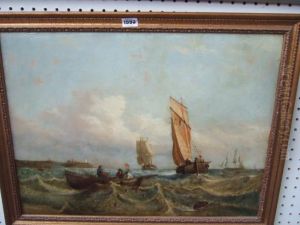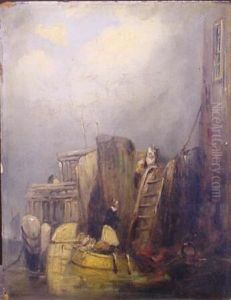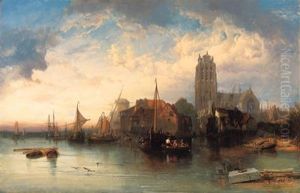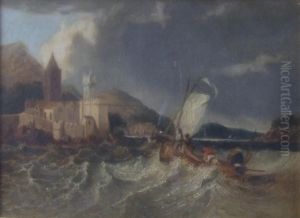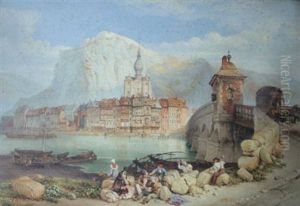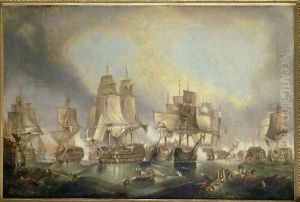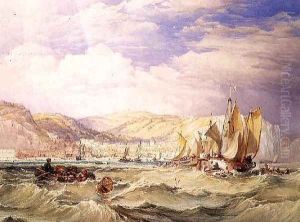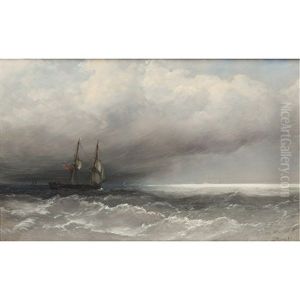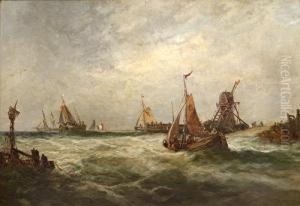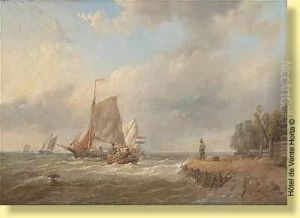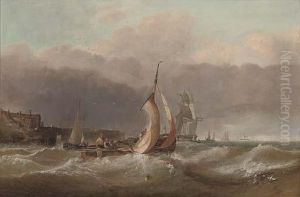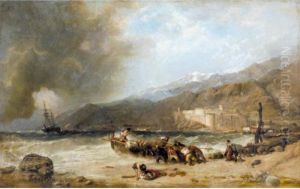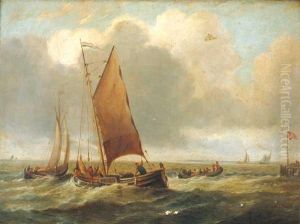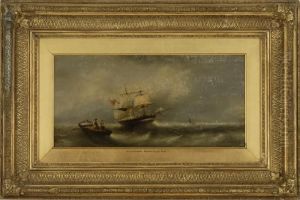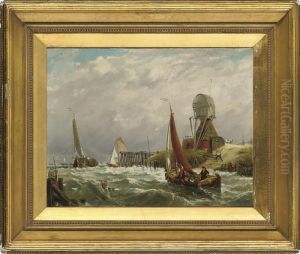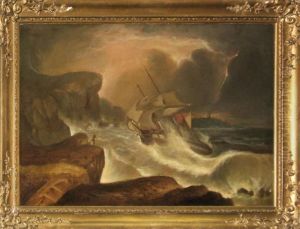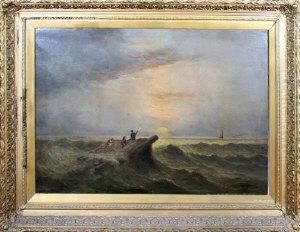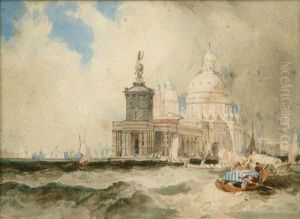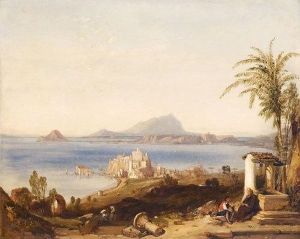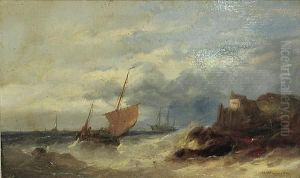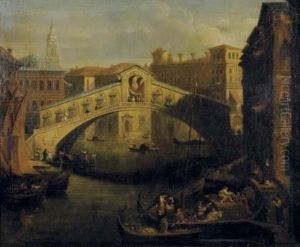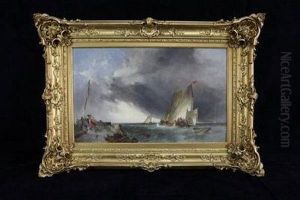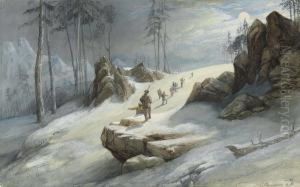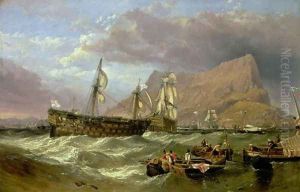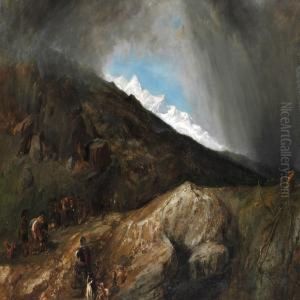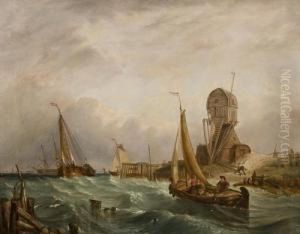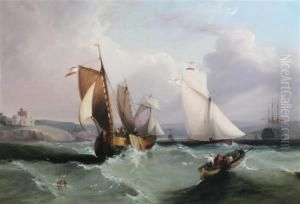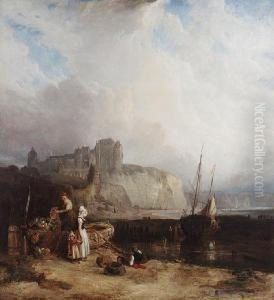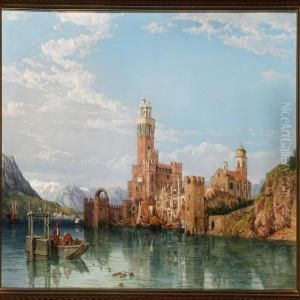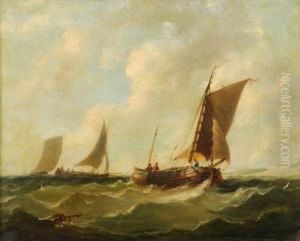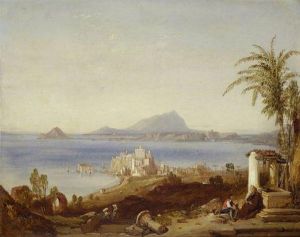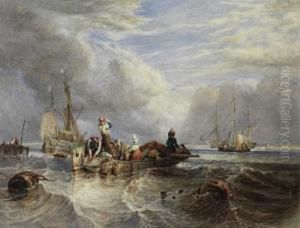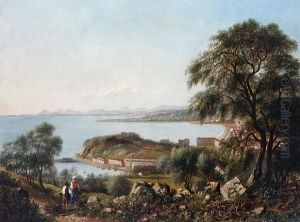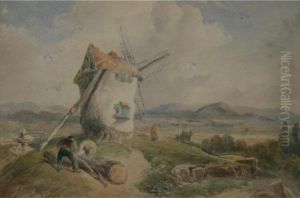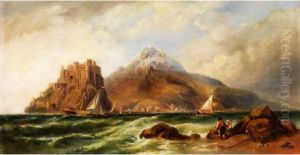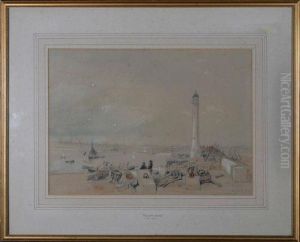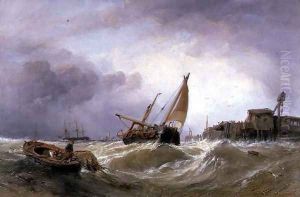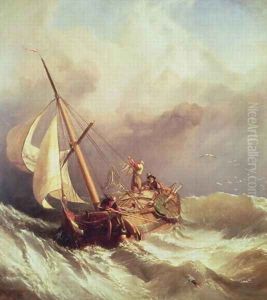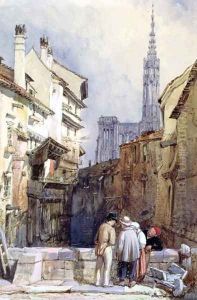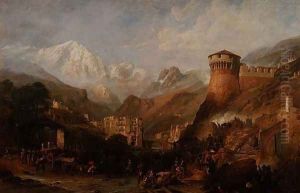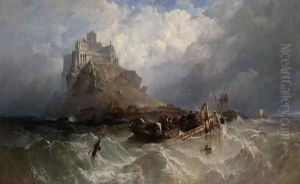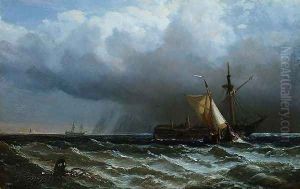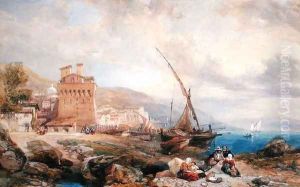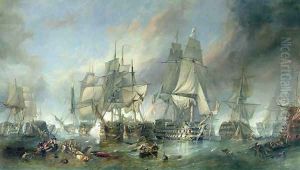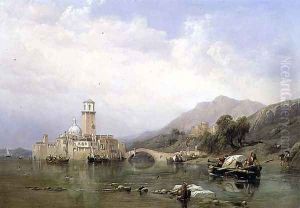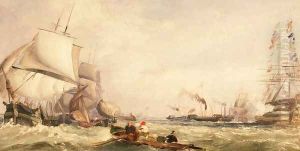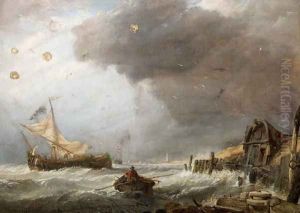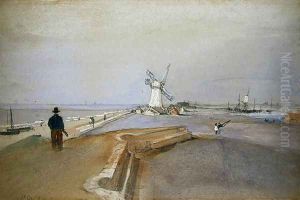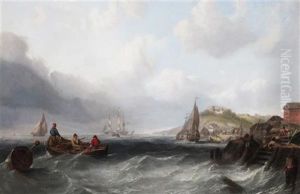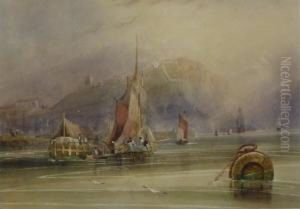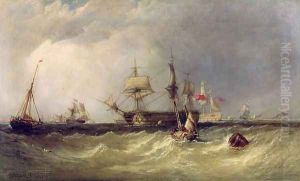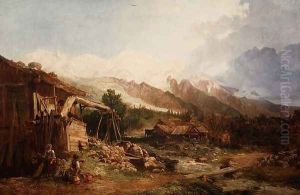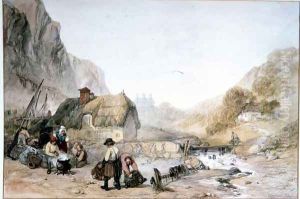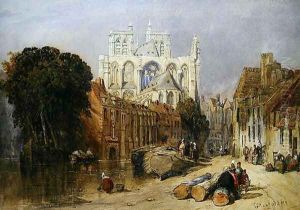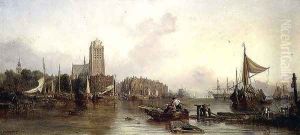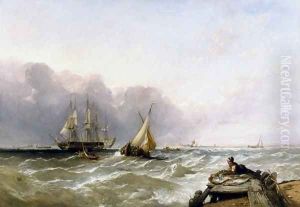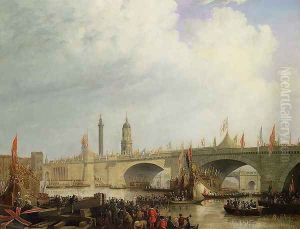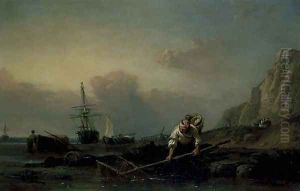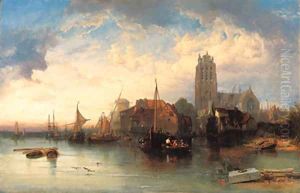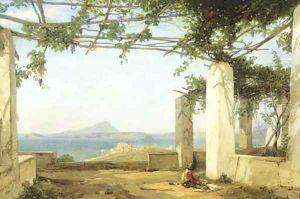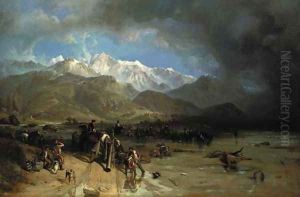William Clarkson Stanfield Paintings
William Clarkson Stanfield, often known as Clarkson Stanfield, was a prominent English artist of the 19th century renowned for his marine and landscape paintings. Born on December 3, 1793, in Sunderland, the son of James Field Stanfield, an Irish-born author, actor and former seaman, Clarkson Stanfield's early life was closely associated with the sea, which would become a recurrent theme in his artwork.
Initially, Stanfield began his career at sea, serving aboard the merchant ships and the Royal Navy, which afforded him the opportunity to observe the ocean and coastal scenes firsthand. After his maritime career and influenced by his experiences, he pursued a career in the arts. He first worked in the theatre, where he painted scenery and gained recognition for his skill in depicting nautical scenes.
In the 1820s, Stanfield turned to fine art and exhibited his first painting at the Royal Academy in 1820. He became a member of the Royal Academy in 1835 and established himself as one of the foremost marine painters of his time. His works were highly regarded for their accuracy and attention to detail, often featuring ships and coastal landscapes with dramatic weather and lighting conditions.
Stanfield was also a member of the Society of British Artists and served as its president for a period. Beyond marine paintings, he produced a variety of landscapes and historical scenes. His travels throughout Europe, especially Italy, influenced his selection of subjects and his style, which was noted for its romantic qualities and technical brilliance.
In his personal life, Stanfield was married twice and had several children. His second son by his first marriage, George Clarkson Stanfield, also became a painter. Clarkson Stanfield's reputation was such that Charles Dickens, a close friend, described him as an artist who could paint both the 'softness of the air' and the 'wilderness of the sea.'
Stanfield's work was widely celebrated during his lifetime, and he continued to exhibit regularly at the Royal Academy until his health declined. He passed away on May 18, 1867, in Hampstead, London. Today, his paintings are held in numerous collections and continue to be appreciated for their vivid representation of maritime life and the natural beauty of the landscapes he portrayed.
